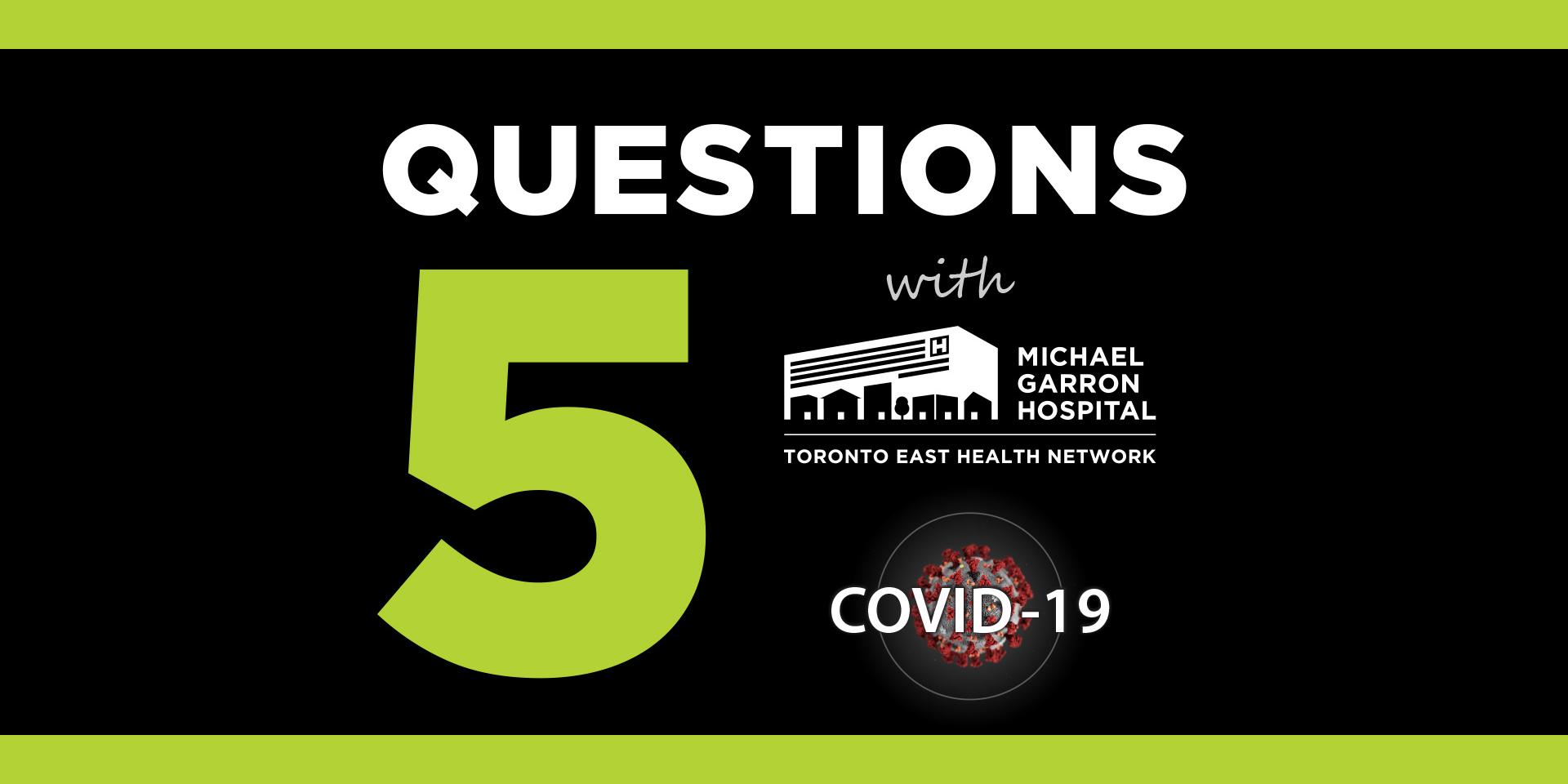MGH campus transformation
MGH’s campus transformation continues with major renovation work. Patients and visitors can expect to experience noise, hallway closures and detours around the hospital. Learn more about our campus transformation.
MGH’s campus transformation continues with major renovation work. Patients and visitors can expect to experience noise, hallway closures and detours around the hospital. Learn more about our campus transformation.

Sarah Downey, president and CEO of Michael Garron Hospital (MGH), asked Kevin Edmonson, Laurie Bourne, Kelly Anderson and Matt Hyginus five questions about emergency operations at Michael Garron Hospital during COVID-19.
You have questions and Michael Garron Hospital (MGH) has answers.
In times of crisis, information changes constantly and organizations must adapt at a rapid pace.
In this community edition of “5 Questions with President and CEO Sarah Downey” video series, Sarah interviews Kevin Edmonson, Director of the Emergency Department and Complex Continuing Care; Laurie Bourne, Director of Patient Safety, Operational Excellence and Innovation; Kelly Anderson, Accreditation Lead; and Matt Hyginus, Improvement Analyst; to reveal what goes on behind the scenes of emergency operations at MGH, during a pandemic.
Watch the video to find out the answers to the following 5 questions:
Key Points: MGH has Emergency Preparedness Plans which are used to guide leadership in crisis situations. Within these plans are directions for initiating a Command Centre. The purpose of a Command Centre is to ensure that the right people come together to facilitate effective decision making. MGH’s Command Centre is located on the first floor of the B wing and has technological capabilities to connect key partners from both inside and outside the organization, seven days a week.
Key Points: MGH’s Command Centre is the main decision making body for the hospital’s pandemic response. Daily meetings are held to set organizational priorities and ensure that policies and procedures align with the latest information. In addition, the Command Centre is where smaller working groups (i.e. staff and patient screening, family presence/ essential visiting, personal protective equipment, staff appreciation, wellness etc.) go to provide status updates for discussion, approval and dissemination.
Key Points: Many meetings are facilitated through the Command Centre. After each meeting the Command Centre documents decisions and flags any new updates/priorities which need to be followed up on or communicated across the organization.
Key Points: In the early days of the hospital’s Command Centre response focused on speed, not perfection. The hospital had to move quickly in order to put structures in place which enabled timely decision making, issue management and communication both internally and externally. As the weeks and months go by, the hospital continues to re-evaluate and adapt the Command Centre structure and roles to ensure that it continues to meet the needs of the organization.
Key Points: Acknowledging that COVID-19 will be around for a while, MGH must remain nimble and adapt to its new normal. The hospital will continue to follow robust infection, prevention and control policies and procedures as it cares for its patients during the COVID-19 pandemic while also ensuring that it is able to move forward with other hospital priorities.
Related Content